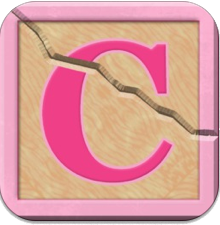I can ramble about each project for a very long time—what I learned, what I found fascinating, the challenges overcome, etc …
For those curious about what I would ramble about, here are a few ideas.
Overcoming the Learning Curve
The Learning Curve of 2012:
Gaining Confidence that I Can Make an App
I minored in computer science, but I never made an app. I needed to solve enough technical challenges to believe I could build out an interactive book. Note, in 2012 there were probably less than 100 children’s book on the iPad since the iPad was so new. In one week I solved enough challenges (e.g., finding a book I could learn from, knowing what program to code with, putting a picture on the iPad, interpreting touch on the iPad, etc.) that I knew I could complete my storybook from start to finish.
The Learning Curve of 2015:
Gaining Confidence that I Can Implement Physics
In my first app I used some hacks to simulate physics, but I knew if I really wanted to push how readers interact with the text I had to learn how to use physics. Because at the time, one of the most interactive and successful books was Alice in Wonderland, which used physics. The diagram to the right explains the confusion I was presented in 2015. I began using Cocos2D-iphone in 2012 because it had the best resources, but in 2015 it was outdated, so to learn physics I used the development engine Cocos2d-SpriteBuilder, again, because it had the best resources. I also had to learn how to use Chipmunk and Physics Editor along with Cocos2d to create the physics interactions I imagined. Now, these are all outdated. :D
Sample Pseudocode from Scar Stories
I was surprised how many interactions needed to be programmed for each page. Here is an example of all the interactions that needed to happen on a more complex page.
Goal of the Page: user plays with a punching bag, breaks the punching bag, and the Great Choo Choo stomps on the text.
Interactions:
Speed bag slowly pushed by interaction (rests on finger)
Speed bag stopping on touch
Speed bag responding to swipe at variable speeds
Speed bag interacting with upper bar
Speed bag not interacting with upper bar chain
Upper bar changing light when hit
Speed bag breaking after seven hits
Upper bar moving up after seven hits
Great Choo Choo jumping down after upper bar disappears
Background changing but keeping texture
Great Choo Choo 'smashes text' animation
Great Choo Choo 'breathes' animation
Great Choo Choo 'spin head' animation
App Icon for Cutie Bear
User Design Lessons from Cutie Bear
Cutie Bear was my first self-published book. By allowing my friends, family, and children to playtest my book, I developed principles on how to create outstanding interactive books.
Show your work to everyone. I'll show my app, finished or unfinished, to anyone: roommates, random families in coffee shops, students, etc. By carefully observing people’s reactions I can learn what works and does not work during experimental design.
Do not assume people will explore. As soon as some people receive the app, they ask, "What do I do?" Others start exploring. I can't assume everyone is an explorer.
There is an interaction for everyone. When I asked people about their favorite page, I found that different pages excite different individuals. Below are some common interactions that excite people:
Interactions that let the user to create a story
Interactions that surprise a user
Interactions that do what the user wants it to do


